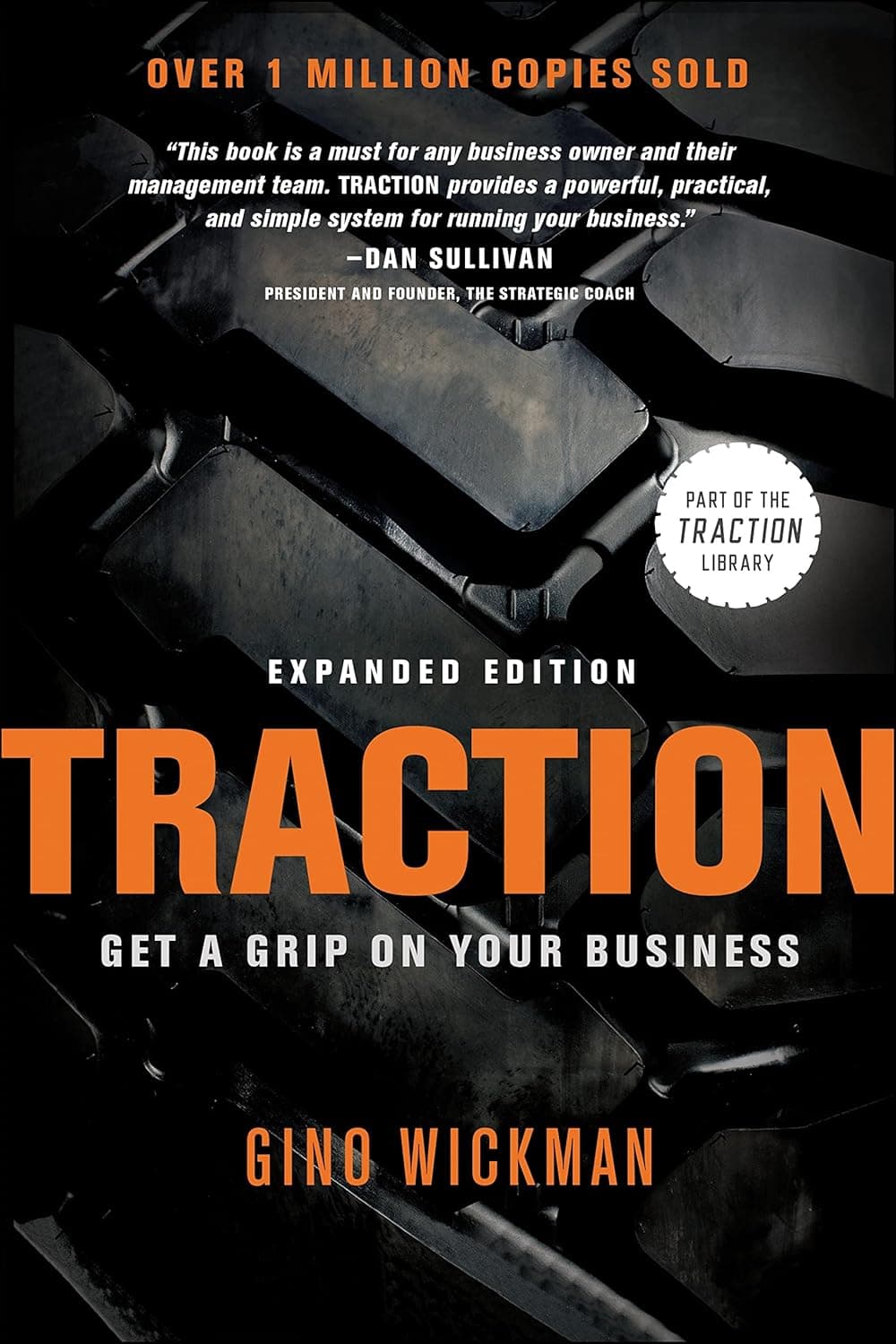
Traction: Get A Grip On Your Business
By: Gino Wickman
Category: Business
Finished:
Highlights
VISION Successful business owners not only have compelling visions for their organizations, but also know how to communicate those visions to the people around them. They get everyone in the organization seeing the same clear image of where the business is going and how it’s going to get there. It sounds easy, but it’s not.
PEOPLE Successful leaders surround themselves with great people. You can’t build a great company without help. EOS cuts through buzzwords such as “A players,” “platinum,” “100 percenters,” and “superstars” to provide a practical understanding of the two essential ingredients of any great team: the right people in the right seats.
DATA The best leaders rely on a handful of metrics to help manage their businesses. The Data Component frees you from the quagmire of managing personalities, egos, subjective issues, emotions, and intangibles by teaching you which metrics to focus on.
A Scorecard is a weekly report containing five to 15 high-level numbers for the organization.
ISSUES Issues are the obstacles that must be faced to execute your vision. Just as an individual’s success is directly proportionate to his or her ability to solve any issues that arise, the same holds true for a company.
PROCESS Your processes are your Way of doing business. Successful organizations see their Way clearly and constantly refine it. Due to lack of knowledge, this secret ingredient in business is the most neglected of the Six Key Components. Most entrepreneurs don’t understand how powerful process can be, but when you apply it correctly, it works like magic, resulting in simplicity, scalability, efficiency, and profitability.
TRACTION In the end, the most successful business leaders are the ones with traction. They execute well, and they know how to bring focus, accountability, and discipline to their organization.
Gaining traction requires two disciplines. First, everyone in the organization should have Rocks, which are clear 90-day priorities designed to keep them focused on what is most important. The second discipline requires implementing what is called a Meeting Pulse at all levels in the organization, which will keep everyone focused, aligned, and in communication.
To be truly ready for this change, you must be willing to embrace the following four fundamental beliefs:
- You must build and maintain a true leadership team.
- Hitting the ceiling is inevitable.
- You can only run your business on one operating system.
- You must be open-minded, growth-oriented, and vulnerable.
His first rule of building a healthy organization: “Build and maintain a cohesive leadership team.”
Obsessions of an Extraordinary Executive: The Four Disciplines at the Heart of Making Any Organization World Class.
Organizations usually expand in spurts, by smashing through a series of ceilings. Reaching the natural limits of your existing resources is a by-product of growth, and a company continually needs to adjust its existing state if it hopes to expand through the next ceiling.

